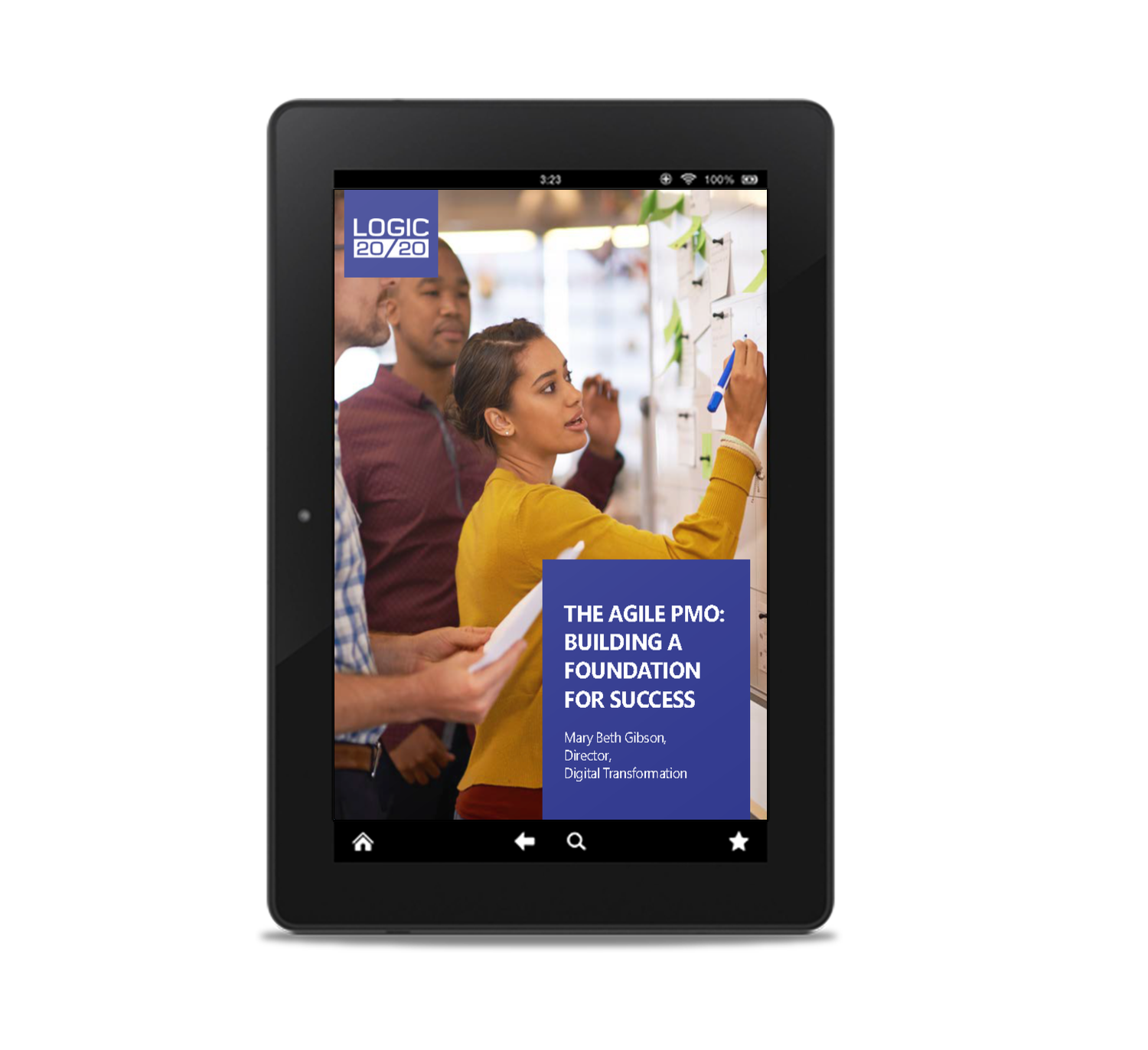Transform your project management office (PMO) with Agile strategies that deliver real value
Explore the evolution of program management in our latest white paper, The Agile PMO: Building a Foundation for Success. This guide offers actionable insights for organizations seeking to adapt to constant change, improve collaboration, and focus on value delivery over process compliance.
Download your copy today to learn:
The key differences between traditional and Agile PMOs
The role of the Agile program manager in driving success
5 proven strategies for building an Agile PMO
How to balance compliance with adaptability
With practical examples and expert advice, The Agile PMO: Building a foundation for success is your roadmap to creating a PMO that supports innovation, flexibility, and measurable results.
Why it matters:
In today’s fast-paced business environment, staying competitive requires more than just managing processes. Agile PMOs empower teams to make faster decisions, deliver value more efficiently, and stay aligned with organizational goals.

Excerpt from The Agile PMO: Building a foundation for success
In today’s hyper-competitive business environment, organizations are being challenged to elevate their approach to project management. Traditional methodologies often fall short in the face of escalating needs to deliver value faster, manage increasingly complex projects, and provide greater visibility and transparency to stakeholders. The Agile project management office (PMO) has emerged as a viable solution in addressing present and future challenges, while also uncovering opportunities to improve project success rates, reduce costs, and increase customer satisfaction.
What is an Agile PMO?
Like traditional PMOs, an Agile PMO is an internal organization with the authority to standardize and govern project management processes, policies, and methods across all areas of the business. Whereas traditional PMOs tend to be strongly plan-oriented, the Agile PMO follows Agile principles to be able to adapt more easily to changing needs of teams, projects, the business, and customers.
In contrast to traditional PMOs, Agile PMOs are
- More focused on advising and supporting than controlling Agile project teams
- More collaborative and less hierarchical
- More focused on value delivery than on process compliance
Laying the foundation: the mission of the Agile PMO
The mission of the Agile PMO is to support the organization’s adoption and evolution of Agile methodologies in project management. Fulfilling this mission includes:
Establishing governance centered on driving the evolution to an Agile methodology: An Agile PMO has the authority to establish and implement governance processes in support of the organization’s transition to Agile project management. With this goal in mind, the office may
- Create Agile policies and procedures for project management
- Deliver training and provide support for project teams
- Track the overall progress of the organization’s Agile implementation
Coordinating efforts to evolve the organization’s Agile capabilities: By coordinating the efforts and inputs of various teams and departments, the Agile PMO works to ensure that the business is adopting and evolving Agile capabilities in a consistent manner. Specific tactics may include
- Developing and implementing a roadmap for Agile adoption
- Providing support to Agile project teams
- Sharing best practices across the business
Shifting the measure of success: In contrast to the “big-bang releases” that mark success under waterfall and other legacy approaches to project management, Agile PMOs measure progress by the degree to which the organization is applying Agile concepts. Deliverables in this portion of the mission may include developing new metrics for success, such as
- Customer satisfaction
- Time to market
- Overall quality of products and services
Choosing a methodology and establishing governance to adhere to it: The Agile PMO plays a pivotal role in helping the organization select the Agile methodology (e.g. SAFe, Scrum at Scale, etc.) that best supports its needs and business goals. Once a methodology has been chosen, the Agile PMO establishes governance processes to ensure that project teams adhere to the methodology. At this point, the organization may decide to invest in a Lean Agile Center of Excellence (LACE) for enterprise-wide Agile transformations.
Setting up for success
By establishing a mission at the very beginning of the Agile PMO building process, the organization creates a “North Star” against which to measure its success. With a mission in place that aligns with organization’s values and business goals, the Agile PMO is prepared to move forward in delivering the benefits of improved project success rates, reduced costs, and increased customer satisfaction.
Ready to learn more? Download The Agile PMO: Building a foundation for success today.

Mary Beth Gibson is a Director in Logic20/20’s Digital Transformation practice.

